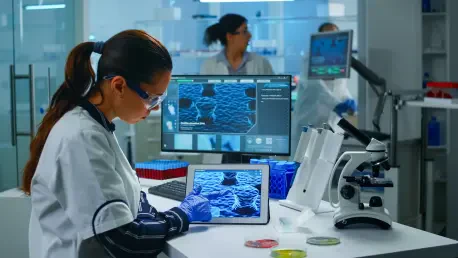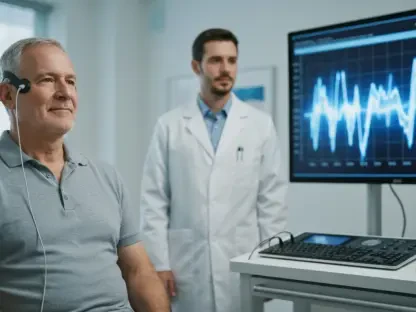What if a single breakthrough could slash diagnostic delays and transform how pathology labs operate across the globe? In a world where every second counts for patient outcomes, the strategic alliance between LigoLab and PathPresenter is sparking excitement with a promise to revolutionize digital pathology. This partnership, unveiled recently, integrates cutting-edge technology to streamline workflows, offering labs a chance to leap into a new era of efficiency and precision. The stage is set for a seismic shift in how diagnoses are delivered, and the implications for healthcare are profound.
Why This Alliance Matters in Pathology Today
At the heart of this collaboration lies a critical mission: to address the pressing inefficiencies plaguing pathology labs. With healthcare systems under strain from rising caseloads and complex cases, the need for faster, more accurate diagnostic tools has never been clearer. LigoLab, a leader in laboratory information systems (LIS), and PathPresenter, a trailblazer in digital image viewing, have joined forces to create a unified platform that could redefine industry standards. Their combined solution promises to eliminate fragmented processes, ensuring pathologists can focus on what they do best—diagnosing with confidence.
The significance of this partnership extends beyond mere convenience. It tackles real challenges, like the time lost toggling between disjointed systems for case data and high-resolution images. By embedding PathPresenter’s FDA 510(k)-cleared clinical viewer into LigoLab’s robust LIS platform, the alliance offers a seamless environment that could cut turnaround times dramatically. For labs struggling to keep pace with demand, this integration represents a lifeline, positioning them to deliver better care in a competitive landscape.
Addressing the Critical Shift to Digital Pathology
Pathology labs today grapple with an urgent reality—traditional methods are buckling under modern expectations. Heavy workloads, the demand for remote collaboration, and the push for precision have exposed the limitations of outdated systems. Digital pathology emerges as a vital solution, enabling whole-slide imaging and virtual case management to bridge these gaps. This partnership arrives at a pivotal moment, as global health challenges continue to highlight the necessity for accessible and adaptable diagnostic tools.
The combined expertise of these two innovators directly confronts issues like operational delays and diagnostic errors. LigoLab’s proficiency in managing lab data and revenue cycles pairs with PathPresenter’s advanced imaging technology to create a system that streamlines every step of the process. Labs adopting this technology stand to gain not just efficiency but also a renewed focus on patient outcomes, ensuring they remain agile in an ever-evolving field.
Unveiling the Core Innovations of the Collaboration
This alliance isn’t just a merger of names—it’s a fusion of groundbreaking features designed to transform pathology workflows. The integration of PathPresenter’s clinical viewer into LigoLab’s platform means pathologists can access case details and whole-slide images in a single, cohesive space. This eliminates the frustrating need to switch between systems, a common hurdle that slows down diagnoses and risks mistakes.
Beyond seamless access, the solution boosts efficiency with measurable impact. Turnaround times shrink as pathologists move swiftly from data analysis to image review, directly benefiting patient care. Additionally, the platform’s scalability ensures it’s not a temporary fix—access to an AI marketplace allows labs to incorporate advanced diagnostic algorithms, preparing them for technological leaps ahead. Interoperability remains a cornerstone, with both companies prioritizing compatibility with existing infrastructure, making adoption feasible for labs of all sizes.
Leadership Perspectives on a Shared Vision
Leaders from both organizations offer compelling insights into the potential of this joint effort. Suren Avunjian, CEO of LigoLab, emphasizes the practical value of a connected workspace, stating, “The aim is an environment where pathologists prioritize diagnosis over navigation, while also paving the way for AI-driven progress.” This perspective highlights a commitment to immediate workflow gains with an eye on future advancements.
Complementing this view, Patrick Myles, CEO of PathPresenter, focuses on the technical backbone, noting, “Interoperability drives this solution, enabling labs to adopt cutting-edge algorithms without friction.” Together, their statements reflect a balanced approach—addressing today’s operational needs while building a foundation for long-term growth. Industry observers anticipate that labs implementing this system could see productivity spikes within months, based on early feedback from pilot programs.
How Labs Can Adopt This Game-Changing Technology
For pathology labs eager to harness this innovation, a structured approach can ensure a smooth transition. Begin by evaluating current systems to pinpoint bottlenecks, such as delays in accessing images or compatibility issues, that the integrated platform can resolve. Engaging with support teams from both companies early on is crucial to tailor the implementation process and minimize disruptions during rollout.
Training staff to navigate the unified interface effectively should be a priority, as familiarity with the system will unlock its full potential. Labs are also encouraged to explore the AI marketplace from the outset, testing relevant tools to enhance diagnostic accuracy without overloading existing workflows. Continuous monitoring of key metrics, like error rates and processing times, will help quantify the benefits and refine usage over time, positioning labs as frontrunners in digital pathology.
Reflecting on a Milestone in Diagnostic Evolution
Looking back, the alliance between LigoLab and PathPresenter marked a turning point for pathology, addressing long-standing inefficiencies with a unified digital solution. The integration of advanced imaging and lab management systems set a new benchmark for how diagnoses were approached. It became evident that such innovations were essential for labs to thrive amid growing healthcare demands.
As the field moved forward, the focus shifted to actionable steps for broader adoption. Labs were urged to assess their readiness for digital transformation, seeking partnerships and tools that aligned with their unique needs. Exploring scalable platforms with AI capabilities offered a path to stay ahead of emerging trends. This collaboration served as a reminder that embracing technology was not just an option but a necessity for shaping the future of patient care.









